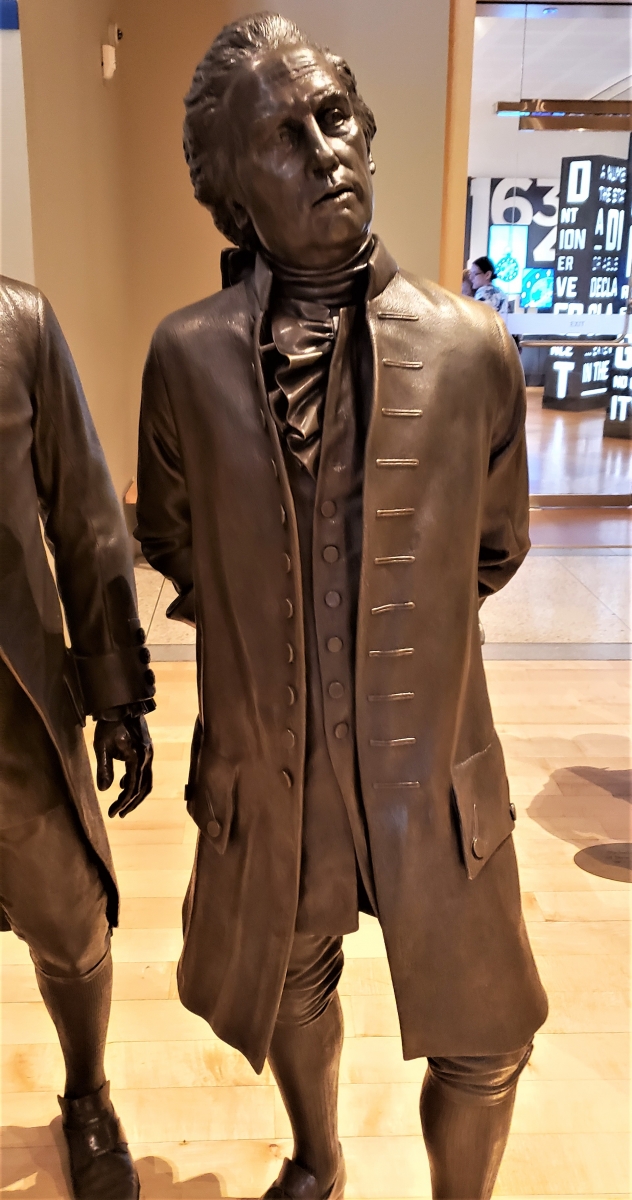Related Posts
- Buy Tickets for The Constitutional Walking Tour of Philadelphia – See 20+ Sites on a Primary Overview of Independence Park, including the Liberty Bell and Independence Hall
- Constitutional Convention
- Stamp Act Congress
- First Continental Congress
- Carpenters' Hall
- Second Continental Congress
- Independence Hall
- Signers' Garden
- National Constitution Center
- Old City Hall
Birth: September 17, 1739
Death: June 21, 1800 (age 60)
Colony: South Carolina
Occupation: Lawyer, Politician, Judge
Significance: Signed the United States Constitution (at the age of 48); served as the Governor of South Carolina (1779 -1782); served as an Associate Justice of the Supreme Court of the United States (1790-1791); and served as the Chief Justice of the Supreme Court of the United States (1795)

John Rutledge was born in South Carolina to a Scottish immigrant family. Rutledge's father was a physician and sent Rutledge to London for his education. In 1758, Rutledge began studying law at Middle Temple and upon the completion of his studies, he returned to South Carolina where he practiced as a lawyer in Charleston.
Rutledge was a gifted lawyer and quickly rose to prominence within the city and was looked upon as a local leader as the Colonial relationship with Great Britain began to deteriorate in the 1760s. In 1765, Rutledge was elected to the Stamp Act Congress, one of the first efforts in the Colonies to organize against British overreach.
Almost a decade later, with relations between the Colonies and Great Britain continuing to deteriorate, South Carolina named Rutledge to the First Continental Congress and then a year later, Rutledge was also named to the Second Continental Congress. Rutledge left the Second Continental Congress before signing The Declaration of Independence however, since he was elected President of South Carolina (equivalent to the modern day position of Governor).
As President of South Carolina, Rutledge organized South Carolina's defense against the British. In 1778, Rutledge resigned the Governorship over a dispute involving the newly created South Carolina Government. In the end, Rutledge was able to push for his desired changes to the South Carolina state government and was once again elected to lead the state of South Carolina in 1779, this time as Governor.
As a representative of South Carolina, Rutledge was named as a member of the Constitutional Convention which met in Philadelphia during the Summer of 1787. At the Constitutional Convention, Rutledge held an important position since he sat on five committees including the Committee of Detail, which he chaired. Rutledge helped to debate, draft, and sign the United States Constitution.
After the ratification of the United States Constitution, George Washington named Rutledge as one of the first Associate Justices of the Supreme Court of the United States, which met at Old City Hall in Philadelphia. Rutledge resigned from the position in 1791 to return to South Carolina, but in 1795, he rejoined the Supreme Court, this time as the Second Chief Justice in the court's history. Rutledge was a recess appointment by George Washington and although he heard two cases, Rutledge still needed to be confirmed by the U.S. Senate when they returned to Philadelphia.
However, before that could happen, Rutledge gave an incendiary speech against the Jay Treaty with Great Britain in which he claimed he would rather George Washington die than sign the Jay Treaty. The speech enraged many within the American government and the American public. As a result, Rutledge was not confirmed by the U.S. Senate, and his term as Chief Justice ended after only 138 days, the shortest tenure of a Chief Justice in the Supreme Court's history.
With his reputation destroyed, Rutledge left Philadelphia to return to South Carolina, and he never again held a public office. Rutledge died five years later in 1800 at the age of 60.
John Rutledge in Philadelphia
Rutledge first lived in Philadelphia when he was a member of the First Continental Congress which met at Carpenter's Hall. The following year, he returned to Philadelphia and served on the Second Continental Congress. In 1787, Rutledge returned to Philadelphia and helped to write the United States Constitution as a member of the Constitutional Convention, which met at Independence Hall. Rutledge also worked in Old City Hall as an Associate Justice and then as Chief Justice of the Supreme Court of the United States while Philadelphia was the Capital city of the United States. Today, you can also see a statue commemorating Rutledge for his role in the creation of the United States Constitution in the Signers' Hall exhibit of the National Constitution Center. Signers' Garden pays tribute to the Founding Fathers, including those such as Rutledge who signed the Constitution of the United States. The National Constitution Center, Carpenter's Hall, Old City Hall, Signers' Garden and Independence Hall are all visited on The Constitutional Walking Tour!



